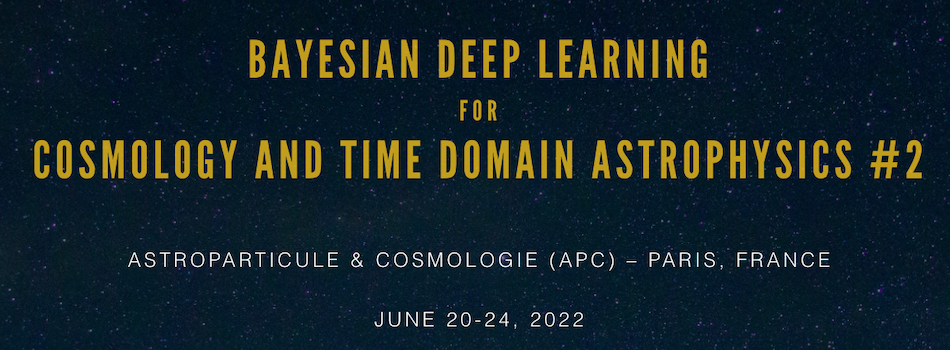Orateur
Description
We propose an improvement of the statistical model of the Delight code, which proposes a Bayesian estimation of the photometric redshift PhotoZ of target galaxies from training galaxies data.
The peculiarity of this estimator is that it combines a template fitting estimator capable of extrapolation to large redshift with a more accurate machine learning estimator but with a low extrapolation capability.
The Gaussian likelihood function of the observed target fluxes in different bandwidths is computed on a predictive model built on a multivariate Gaussian process Y = f(X) on a multidimensional space represented by X = (band indexes, redshift, template indexes), where Y is the vector of fluxes in the different bands and to which we add a nuisance parameter l corresponding to the relative scaling factor of luminosity between the target and training galaxies.
The Gaussian process is implemented on a mean flux prediction computed from the SED templates (latent SED) while the covariance matrix (kernel) encodes only the physical flux-redshift relation independently of any reference to a SED. The role of the kernel is to learn from the training galaxies the presence of variable features such as a continuum related to dust absorption or emission lines and to find these features in the targets while they are absent from the latent SED. The interpretation of this kernel is to evaluate a weighting coefficient that selects the training galaxies that present characteristics close to those of the target galaxies in the likelihood function.
This Photoz estimator is built around a hierarchical Bayesian model with hyperparameters that need to be optimised either on simulations or on data.
We compared the performance of this hybrid estimator with other estimators such as a Random Forest Tree and the LePhare code of SED Template Fitting with standard Photoz metrics on DESC DC2 simulations.
The results suggest that there is room for improvement for Delight compared to pure machine learning results, while Delight and LePhare show similar performance.
We consider that an optimizations of Delight's hyperparameters would be facilitated if the flux-redshift model constructed from the SEDs and spectral bands were corrected beforehand for the photodetection bias induced by the sample selection.
The hyperparameter optimization could be performed later with a self-differentiated version of the marginal likelihood function.

